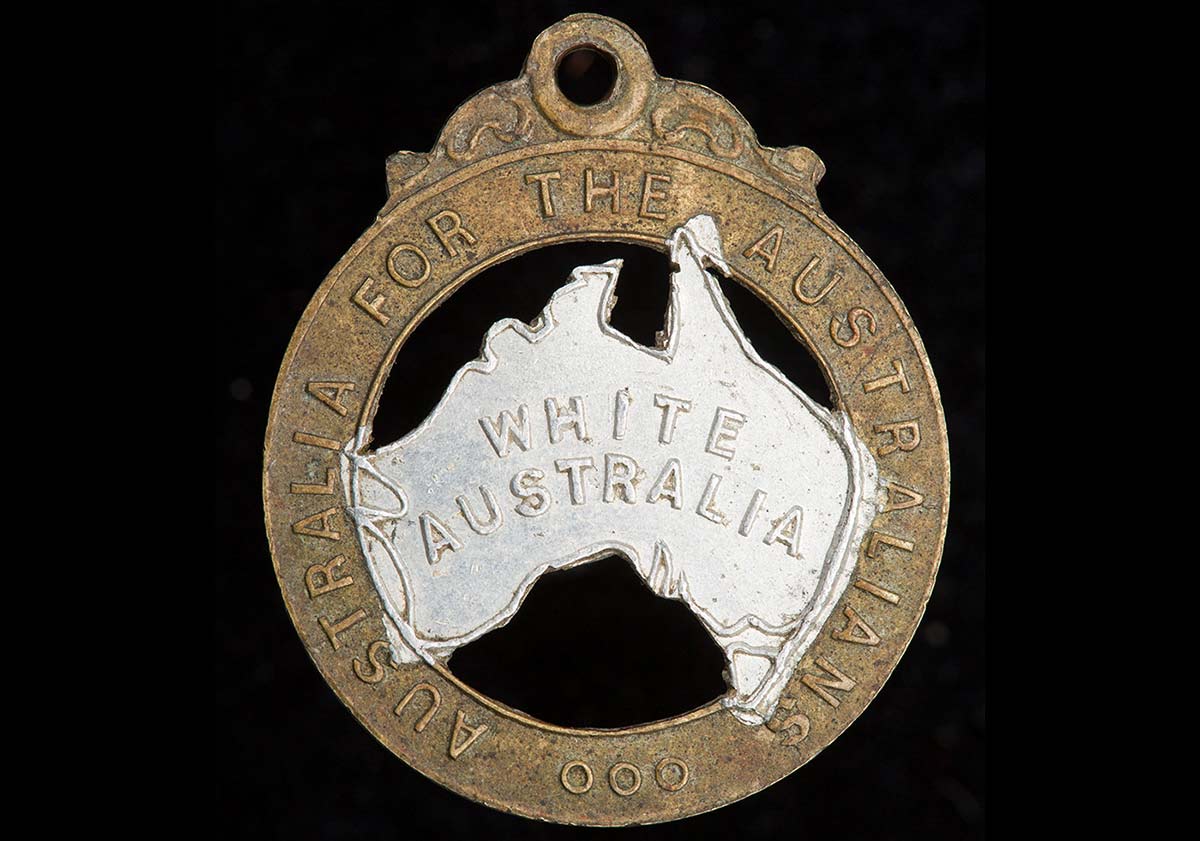Brass ‘White Australia’ protection badge, 1906. Image credit: National Museum of Australia
This month’s Spotlight features a recently published commentary from Language on the Move (LOTM), a peer-reviewed sociolinguistics research site devoted to multilingualism, language learning, and intercultural communication in the contexts of globalization and migration. It was prepared by Ingrid Piller, LOTM editor and Distinguished Professor of Applied Linguistics at Macquarie University, Sydney. The commentary introduces a new article in the journal Ethnicities, authored by Piller, Hannah Torsh, and LCJ Hub member Laura Smith-Khan. Thanks to LOTM for permission to republish a portion of this commentary.
The typical Aussie is widely imagined as a white English speaker
Despite decades of multiculturalism, the typical Australian is widely imagined as a white monolingual speaker of English. Australians who do not look white regularly report that they are made to feel that they do not belong and those with non-native accents sometimes avoid speaking in public so as to remain inconspicuous. With almost half of Australians born overseas or having at least one parent born overseas and about a quarter speaking a language other than English at home, the perception of Australia as a nation of white English speakers is completely out of step with demographic realities. Why do so many people continue to hold on to this perception?
The historical roots of Australia as a white English nation
There are historical reasons that can explain how Australia came to be an Anglo nation. One of these is the pernicious fiction of terra nullius that wrote Indigenous people out of the imagined nation. Another reason is the erasure of the British-Irish conflict that was imported into the penal colony but subsequently glossed over into an imagined homogenous “Anglo-Celtic” settler population. Black convicts, who accounted for 1-2 percent of transportees, were cancelled even more completely. A third foundation lies in a restrictive immigration policy that was designed to exclude non-British settlers in the first half of the 20th century and which was literally known as the “White Australia” policy. These historical myths have deep roots, but do they still influence perception today?
The media teach us ways of seeing
Contemporary Australia is patently diverse. So why do we continue to see Australians who are not white and who do not speak English as their first and only language as perpetual outsiders? Many scholars have suggested that the media are partly to blame because they overrepresent white English speakers and underrepresent everyone else. This may be true of news, current affairs, and fictional genres but there are some extremely popular genres that do show high levels of diversity. Reality TV is one such genre and none more so than the ever-popular Border Security.
Imagining Australia on Border Security
Since it was first aired in 2004, Border Security has provided Australians with “a fascinating insight into the daily workings of the thousands of officers who dedicate their lives to protecting Australia’s border,” as the show’s website explains. Over the years, the show has attracted many millions of viewers and you are likely familiar with the format: each episode has immigration, customs, or quarantine officers face off with passengers who are suspected of constituting a security threat. The basic story arc is always suspicion, investigation of the suspicion, and resolution.
My colleagues Hanna Torsh, Laura Smith-Khan, and I have been collecting these episodes because they provide us with a data source for our research in intercultural communication. They also help us answer the question why we continue to imagine the prototypical Australian as a white monolingual speaker of English.
